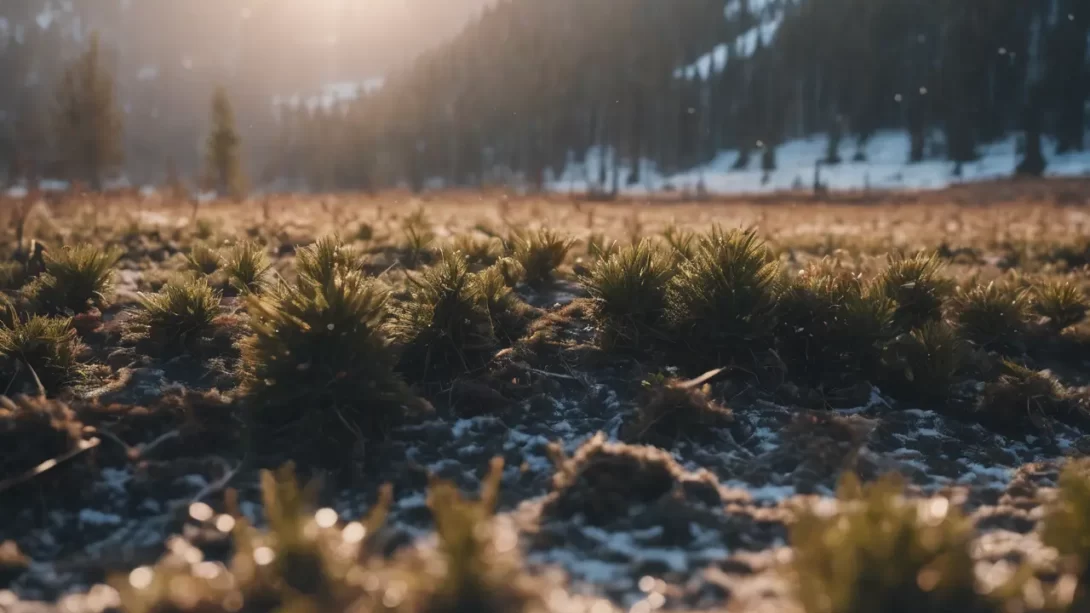Ground freezing is a significant natural phenomenon with wide-ranging implications in agriculture, construction, and environmental studies. Understanding how and when the ground freezes is crucial for preparing for winter conditions, managing crops, and planning construction projects. This article will explore the intricate process of ground freezing, focusing on the variables that influence how quickly soil transitions into a frozen state. By examining these factors, we can gain insight into the practical implications of ground freezing in different contexts.
Ground Freezing
Ground freezing occurs when the soil’s temperature drops below the freezing point of water, leading to the formation of ice within the soil matrix. This process is influenced by a combination of environmental conditions, including air temperature, soil composition, and moisture content. The type of soil and its properties—such as porosity, density, and water retention capacity—play a critical role in how quickly it freezes. The freezing of ground soil is not just a surface phenomenon but can extend to varying depths, affecting root systems of plants, the stability of structures, and the overall landscape.
Factors Affecting Ground Freezing Time
Several key factors influence the rate at which the ground freezes:
- Temperature Patterns: The persistence of low temperatures is crucial. A sustained period of cold weather is more likely to result in ground freezing than short cold spells.
- Soil Composition: Different soil types freeze at different rates. Sandy soils, for instance, tend to freeze quicker than clay soils due to their lower water content and larger pore spaces.
- Moisture Content: The amount of water in the soil significantly affects freezing time. Wet soils take longer to freeze completely due to the latent heat released during the freezing of water.
- Snow Cover: A layer of snow can act as an insulator, keeping the ground warmer than the air temperature and slowing down the freezing process. The thickness and duration of snow cover are important factors in this regard.
Measuring Ground Freezing
The measurement of ground freezing involves assessing both the soil temperature and the depth to which the freeze extends. Tools such as soil thermometers and frost tubes are commonly used for this purpose. Soil thermometers provide real-time temperature readings at various depths, while frost tubes help in gauging the depth of the freeze. For more advanced analysis, ground-penetrating radar and thermal imaging can also be employed. These measurements are vital in fields like agriculture, where freeze depth affects planting and harvesting schedules, and in construction, where the frost line determines foundation depths to prevent frost heave.
Regional Variations in Ground Freezing
The rate and extent of ground freezing vary significantly across different regions due to varying climatic conditions. Factors such as latitude, altitude, and local weather patterns play a crucial role:
- Latitude: Regions closer to the poles experience more profound and longer-lasting ground freezing compared to those near the equator.
- Altitude: Higher altitudes tend to have lower temperatures, leading to quicker and deeper soil freezing.
- Local Climate Patterns: Areas with continental climates typically see more extreme temperature ranges, resulting in more pronounced ground freezing, unlike maritime climates where the ocean moderates temperature extremes.
For example, in the northern United States and Canada, the ground may freeze several feet deep and remain frozen for months, whereas in milder climates, such as the southern United States, ground freezing might be shallow and short-lived. Understanding these regional variations is crucial for local farming practices, building codes, and environmental management.
The Impact of Climate Change on Ground Freezing
Climate change is altering ground freezing patterns globally, with significant implications for ecosystems, agriculture, and infrastructure. Warmer global temperatures have led to less frequent and shallower ground freezing in many regions. This shift can disrupt the natural cycles of plant and microbial life, affecting soil health and crop yields. In areas where permafrost is present, thawing can lead to ground instability, impacting buildings and roads. The changes in freeze-thaw cycles also influence water runoff and soil erosion patterns, presenting new challenges in land and water management. Predictive models are increasingly being used to understand these impacts better and prepare for future scenarios.
Preventing or Delaying Ground Freezing
In some situations, it’s beneficial to prevent or delay ground freezing. Agricultural practices such as applying mulch or growing cover crops can help insulate the soil, retaining warmth and moisture. In construction, techniques like insulating blankets or heated enclosures are used to keep the ground from freezing during building projects in winter. For infrastructure, embedding heating elements or using insulating materials can prevent ground freezing around pipes and foundations. These methods are not only crucial for maintaining productivity in colder climates but also play a role in environmental conservation by preserving natural soil processes.
Conclusion
Ground freezing is a complex process influenced by a multitude of factors including temperature patterns, soil composition, moisture content, and regional climate variations. With the ongoing impact of climate change, understanding and adapting to these changes becomes increasingly important. Whether it’s preparing for agricultural activities, planning construction projects, or managing natural ecosystems, an in-depth understanding of ground freezing dynamics is essential. As our climate continues to evolve, so too must our strategies for dealing with the challenges and opportunities presented by ground freezing.



